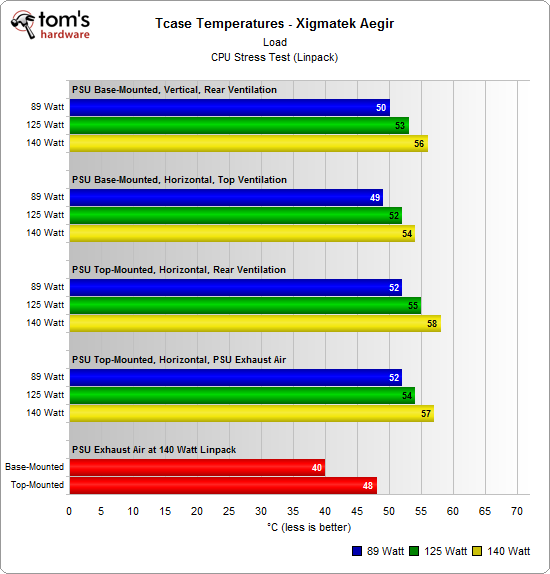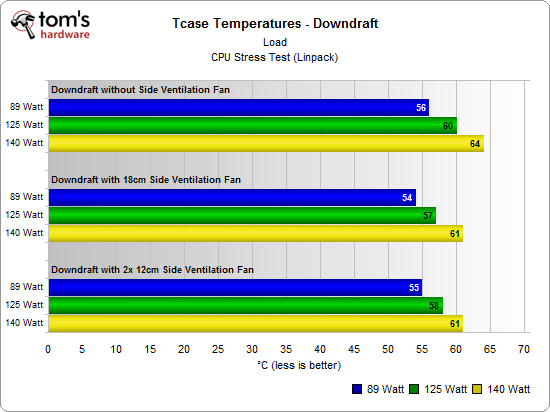How To: Properly Plan And Pick Parts For An Air-Cooled PC, Part 1
What better way to wrap up a scorching summer than with a last word on cooling? We explain the most important rules for creating ideal airflow, address the potential effectiveness of side fans, and discuss the finer points of graphics card cooling.
Airflow: Measurements And Comparisons
Of course, we wanted to quantify the claims made in the preceding pages using a number of different installation scenarios. We used an Antec Lanboy Air from one of our earlier case round-ups, making its mesh sides air-tight by covering them with cardboard. The Lanboy Air allows for both top and bottom power supply mounting. The results speak for themselves:
Looking at the exhaust air temperature from the power supply, we see the greatest advantage when it's mounted on the bottom of our test enclosure.
Here we see that systems cooled by downward-facing blowers really benefit from side ventilation.
Get Tom's Hardware's best news and in-depth reviews, straight to your inbox.
Current page: Airflow: Measurements And Comparisons
Prev Page Airflow: Hard Drive Cooling Next Page Airflow: Ventilate Graphics Cards Well
Igor Wallossek wrote a wide variety of hardware articles for Tom's Hardware, with a strong focus on technical analysis and in-depth reviews. His contributions have spanned a broad spectrum of PC components, including GPUs, CPUs, workstations, and PC builds. His insightful articles provide readers with detailed knowledge to make informed decisions in the ever-evolving tech landscape

